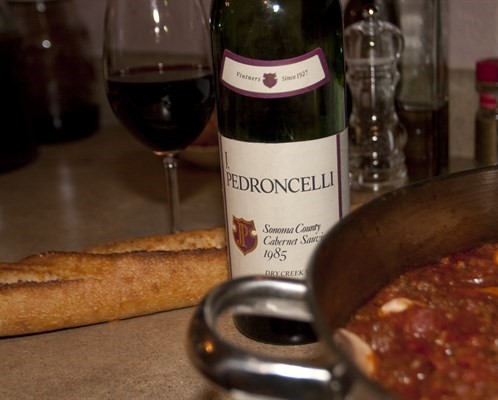Vino In My Dino
Time in the Bottle
September 30, 2014 15:31
Library wines, cellar picks, those wines you’ve saved but now don’t know how they have fared while in your closet, basement or beside your fridge. I have received many emails over the years about our wines they have found in their parent's cellar, in a dusty corner of a store or they have received as a gift. Usually the sender asks about quality of the wine giving me the vintage and name in order to find out more.
Rule of thumb when it comes to that dusty jewel from your basement: check cork for leakage, check fill level in bottle (should be ½ to 3/4 inch from cork), ask yourself what the temperature was in the storage area: constant and cool or was the wine put through the seasons with ranges in temperatures matching the cold or heat outside. Usually you'll see signs of leakage around the capsule or a low-fill level in the bottle-these don't always mean it is a lost cause but can be indicators of a wine beyond its' time.
What does an older vintage wine smell and taste like? Nothing like the 2012 Zinfandel or Cabernet Sauvignon you just drank. Time in the bottle means some things change: ripe fruit often turns to dried fruit notes, toasty oak turns to cedar or tobacco, the wine softens as the tannins age gracefully and move on to a supporting role. The taste is different too—more delicate, less overwhelming in some cases. Aged wines aren't for everyone because so often we enjoy the flavor of wines just released or a year or too older. Here's to older vino in my Dino!

Categories
- COVID
- Follow the Vineyard
- Note from Home
- PairItWithPed
- Pandemic
- pedroncelli
- Port
- Postcards from Home
- Pruning
- Seasons in The Cellar
- Tasting Room
- Thanksgiving
- Vintage Notes
- Winemaking
- Women's History Month
Recent posts
-
91 Years Later
-
Come Over October: It's About Community
-
Come Over October
-
A Legacy Continues!
-
Everything Old is New Again
Popular tags
- family
- Pedroncelli
- French Oak
- OpenThatBottleNight
- Heat wave
- COVID Coffee Chat
- Lake Sonoma
- Finding Your Roots
- 1974 Cabernet Sauvignon
- Holding steady
- Pantry
- Dry Creek Valley
- Crop set
- Reserve
- Barrels
- COVID19
- Four Grapes Port
- Seasons in The Cellar
- Pruning
- Library Wine
- note from home
- Harvest 2022
- Easter
- Courage Zinfandel
- Schotzki
- cooking with wine
- Pandemic
- Sonoma County
- Rosé
- Bushnell Vineyard
- cheese
- newsletter
- Anniversary
- Cookies
- Mother Clone
- Merlot
- Cellar Master
- food and wine
- Sauvignon Blanc
- Cabernet Sauvignon
- Follow the Vineyard
- Down to Earth
- American Oak
- Block 007 Cabernet Sauvignon
- Oak
- Habit
- Recipes
- Estate Vineyard
- Homecooking
- PairitwithPed





